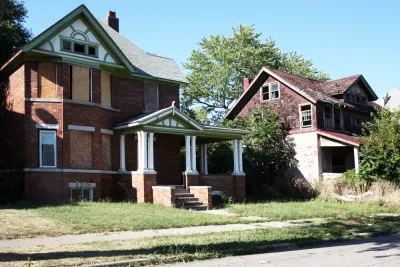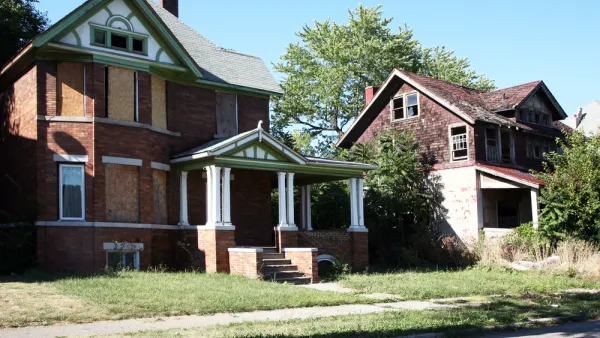The city of Detroit said it would halt a demolition program after a report revealed the amount of lead released by demolitions into the environment, risking the health of children and other local residents.

Kat Stafford and Kristi Tanner provide a bombshell investigative report into the public health outcomes of demolitions in the city of Detroit, finding a trail of broken promises and children at risk from high levels of lead.
Here, Stafford and Tanner summarize the crux of the story:
A 2017 Detroit Health Department task force report concluded there was a potential link between the high number of demolitions occurring in the city during the summer months and elevated blood lead levels of children who live near the demolition sites. The city announced in early 2018 that it would halt nonemergency demolitions in five of the most at-risk ZIP codes — 48202, 48204, 48206, 48213 and 48214 — from May through September.
Except it didn't.
Stafford and Tanner, at the Detroit Free Press, worked with Type Investigations to analyze the nonemergency demolitions approved by the city in the wake of the Detroit Health Department report, finding a large number of approvals. "Work crews in those same neighborhoods continued to raze a total of 219 homes during mid-2018 and in mid-2019. Almost half of them were nonemergency demolitions," according to Stafford and Tanner.
Moreover, the city is "now asking voters to approve a quarter-billion-dollar bond referendum to do even more demolitions." Proposal N for Neighborhoods, also documented in an article by Violet Ikonomova, is on the citywide ballot on November 3.
The article includes a soundbite from U.S. Rep. Rashida Tlaib, D-Detroit, who responds to the data reported in the article by calling the demolitions a "grave injustice" for the communities impacted by the environmental risks of demolitions.
FULL STORY: Children were at risk so Detroit promised to halt demolitions. But that didn't happen.

National Parks Layoffs Will Cause Communities to Lose Billions
Thousands of essential park workers were laid off this week, just before the busy spring break season.

Retro-silient?: America’s First “Eco-burb,” The Woodlands Turns 50
A master-planned community north of Houston offers lessons on green infrastructure and resilient design, but falls short of its founder’s lofty affordability and walkability goals.

Delivering for America Plan Will Downgrade Mail Service in at Least 49.5 Percent of Zip Codes
Republican and Democrat lawmakers criticize the plan for its disproportionate negative impact on rural communities.

Test News Post 1
This is a summary

Test News Headline 46
Test for the image on the front page.

Balancing Bombs and Butterflies: How the National Guard Protects a Rare Species
The National Guard at Fort Indiantown Gap uses GIS technology and land management strategies to balance military training with conservation efforts, ensuring the survival of the rare eastern regal fritillary butterfly.
Urban Design for Planners 1: Software Tools
This six-course series explores essential urban design concepts using open source software and equips planners with the tools they need to participate fully in the urban design process.
Planning for Universal Design
Learn the tools for implementing Universal Design in planning regulations.
EMC Planning Group, Inc.
Planetizen
Planetizen
Mpact (formerly Rail~Volution)
Great Falls Development Authority, Inc.
HUDs Office of Policy Development and Research
NYU Wagner Graduate School of Public Service





























